In 2017, I became a yoga teacher after completing my course in North India.
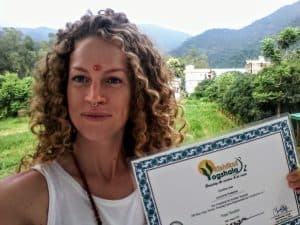
I thought going to the motherland of the practice would give me a good sense of their philosophy. Indeed, it did, and it was short, intense, and totally life-changing.
Although yoga has become a massive moneymaker industry, you can’t take away the experience of spirituality. It’s part of their culture, and you are warmly invited to it.
Having been away from my homeland for more than a decade, it was a bit of a shock as I returned to discover how we teach yoga in North America. I get it, though. We didn’t grow up with spirituality. We grew up with religion, and most of us walked away from it.
It’s no surprise that we took away all the immateriality of the yoga practice and focused on how fit we can become. No judgment, and at least it gets us moving and breathing more efficiently.
Are yoga mats bad for my health?
That said, what you breathe becomes even more important when you exercise or practice pranayama (One of the eight limbs of yoga, which means the flow of vital energy and implies breathwork).
Have you ever wondered, when your nose caresses your mat, that the strong smell of it might not be suitable for you?
You’re making an effort to maintain good health, and here you are, counterbalancing it with inhaling harmful chemicals. PVC mats contain dangerous chemical additives, including phthalates and heavy metals such as lead, cadmium, and organotins.
To learn more about how it negatively affects your health, I invite you to read this great article from the blog I read labels for you.
Quick Links:
1. Scoria – Best Cork Yoga Mat
2. Brentwood Home – Best Cotton & Latex Yoga Mat
3. Yogasana – Best Cotton Yoga Mat
4. Jade Mysore – Best Cotton Yoga Mat
5. Kakaos – Best Jute Yoga Mat
6. Soul Comfort Sheepskin – Best Sheepskin Mat
7. Sugamats – Best Recycled Yoga Mat
8. Liforme – Best Travel Yoga Mat
Are yoga mats bad for the environment?
If your practice consists of going to a yoga studio, you might not own a yoga mat. If that’s the case, it’s time for you to know where those yoga mats end when they no longer look fresh.
I have had the same one for the past three years, on which I’ve practiced daily. But most yoga studios change their mats every 6 to 12 months.
Now, where do they go? Africa? Nope.
Recycling facilities? You wish.
Landfill, my friend.
There is little you can do with worn PVC mats. Technically, equipped facilities can recycle polyvinyl chloride (PVC) material.
The problem is if you’ve added a bunch of junk to the material—plasticizers, UV retarders, dyes, as well as just dirt from use—you’re not dealing with a pure polymer, and you’ll get back a less-than-pristine polymer. Such contaminants make used PVC and TPE yoga mats undesirable to recyclers (Source). Now you know the sad truth.
They are no yoga mats paradise. But I have good news. We have other options!
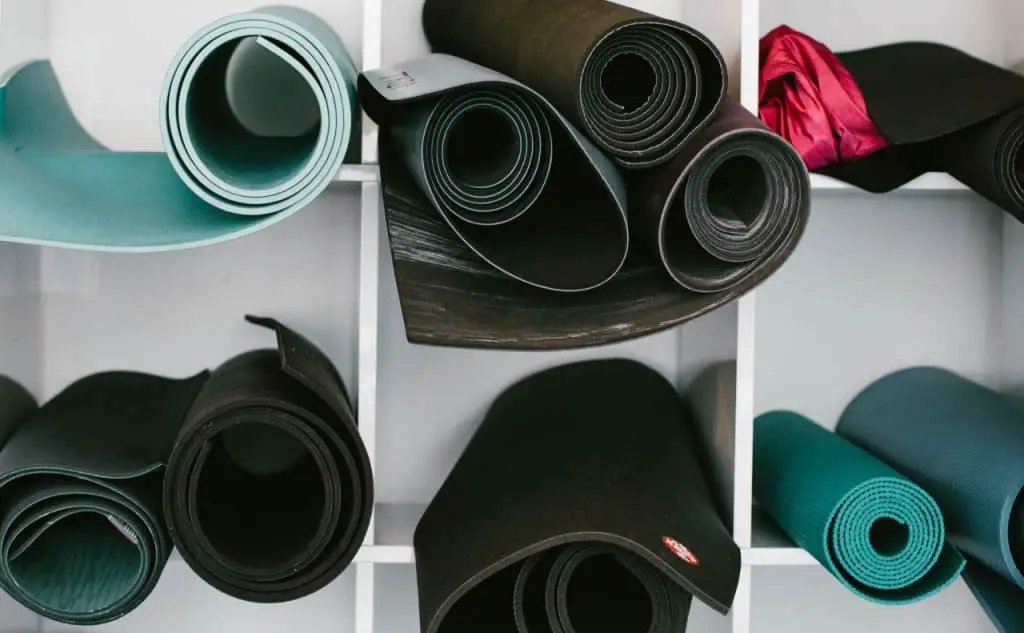
What to do when you can’t Reduce, Reuse or Recycle?
Do you own a PVC yoga mat?
It’s time to get creative and give it a second life.
Remember that you don’t want to intoxicate another human being or animal. Some websites provide ideas like “lining pet carriers” or, even worse, “child safety flooring.” We just took the time to tell you it’s terrible for your health, and it means it’s also bad for your pet and your beloved children.
Here are some ideas, but not limited to, of what you can do with old yoga mats since you now know you can’t recycle them.
Knee pads. Some yogis have sensitive knees, and for them some postures require extra padding. If this is you, cut out a piece of your old mat and place it under your mat, where your knees are, for more comfort. It could also be used as knee pads for gardening. Just cut the mat into even sections and bind the ends with twine.
Furniture foot pads. Cut to size and use as foot pads for the bottom of furniture on a wood or ceramic floor. Glue on pieces with a non-toxic adhesive.
Mouse pad. Cut up small pieces of a yoga mat; it works perfectly.
Camping. It will be perfect as a mat for the mud in front of your tent.
Christmas tree ornaments. Just use holiday cookie cutters.

Do we need yoga mats?
After all, yogis didn’t use them for Millenials. They were initially performing on the ground without any foundation or mat. Eventually, they used deer, tigers, and various animal skins. They didn’t come up with the sticky yoga mat. We did. Of course. I suggest it’s time to go back to natural material.
I don’t use a mat if I practice on the grass. But that’s me. If you choose to do so, make sure to pick a leveled piece of grass free of prickly objects. Please note that it can also be hard on the wrists if the soil is particularly soft. And as much as yoga pictures on the beach look good (if that’s your thing), I dislike having uneven ground beneath me for obvious reasons. Also, I don’t find it very relaxing to have sand in my eyes as it sticks to my hand and falls all over me when moving around. I prefer to practice indoors on a hard floor, free of distraction. There, I need a mat, and so do you. Why? It prevents slipping, allows for balance and alignment, and provides an adequate cushion.
What makes the best eco-friendly yoga mats?
Now that you know that your yoga mat can potentially give you cancer (barely exaggerating) and that you are contributing to more landfill waste by going to a yoga studio without a mat, you want a natural yoga mat that is made of sustainable materials. So you can live longer, and so your mat.
The best-friendly yoga mat depends on a few things. Which type of yoga do you practice? If you enjoy hot yoga sessions or tend to sweat heavily, a super-absorbent mat with excellent traction is needed. For you, I recommend cork mats. Do you travel with it, you lucky bee? Then you want it light. My pick is the travel mat from Liforme. Do you mostly practice at the park and, unlike me, prefer to use a mat? Then you want it to be more durable and easy to wash. Cotton is a good option. In all cases, what you really want is a great grip and natural materials.
Natural yoga mats
There are a few sustainable materials out there that don’t require harsh chemicals to transform them into beautiful non-slip yoga mats. We have picked the most known eco-friendly materials out there, but there are more. To help you find out if a material is eco-friendly are just greenwashing, here is a list of things you want to avoid:
- PVC yoga mats (even eco-friendly PVC and PER)
- Chemical smells
- Synthetic Rubber (recycled or not)
- Recycled tires
- Formaldehyde emitting glues
- Flame retardant foam
- Microfibers (Our yoga clothes are unfortunately made of it, we don’t need more!)
Consider organic and recyclable material from organic and sustainable sources for an eco-friendly yoga mat. Also, look for:
- Natural fabrics (cotton, wool, jute, cork)
- Natural rubber (unless you have a latex allergy)
- No chemical smell
- Water based-inks (for patterned yoga mats)
- Nitrosamine, phthalate, and PVC free
Best non-toxic yoga mats
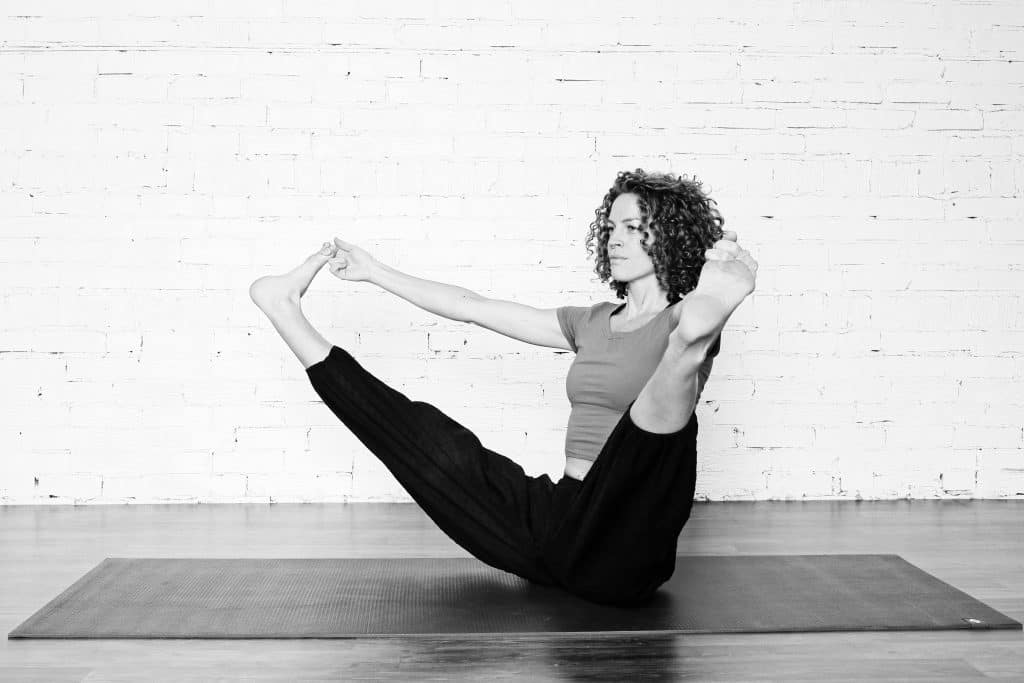
Natural Rubber Tree Yoga Mat
Back in 2008, I was traveling in South America for 13 months. I remember visiting a natural rubber installation in the deep Amazon forest in Brazil. The chemicals used for the transformation were harmful to the workers and the environment.
So before writing good things about natural rubber yoga mats, I decided to do a bit of research. Are the chemicals bad for the environment and the people handling them?
Is the end product toxic for the consumer?
Does natural rubber biodegrade, and if so, how long does it take to break down?
After all, it’s made of plants, so it should. But the truth is that I found little to no answer to these inquiries on the Internet. So I contacted Scotia, a sustainable Canadian yoga brand, to answer my questions. Once they have, I will update this section.
Cork yoga mat
Cork is a natural material made from the cortex of the oak tree, and it’s a renewable resource that doesn’t damage the trees during harvesting.
Cork yoga mats have one side made of cork and the other from a non-slippery material such as natural rubber. Although I am not yet 100% sure that natural rubber is non-toxic, at least your skin won’t be touching it.
The Cork mat becomes grippier as it becomes wetter, and it does this due to a natural compound called suberin that acts as a glue between cork and other surfaces, such as your hands, when wet. For this reason, cork is an excellent material for hot yoga, Bikram yoga, or other high-intensity training.
That said, when the mat is cold and dry, it can be more slippery than other materials. Solution: Spay a tiny amount of water on your mat, more specifically, where your hands and feet touch.
Personally, I add my favorite essential oil to the water and help it penetrate the mat with a cloth. Voilà!
The Best Cork Mat
Our pick: Scoria

Scoria is a sustainable Canadian yoga brand.
They are pretty transparent about the material they use.
Cork is from Portugal, and the rubber is sustainably sourced from Vietnam.
They have, in my opinion, the most beautiful patterns out there.
They use water-based ink, and we also know that water-based adhesives are used to bind the cork and the rubber.
On top of all of that, Your purchase supports life-skills education for indigenous youth.
Price: Between $69-$118.
Get 10% off with code: ZEROWASTEMAN10
Cotton yoga mat
In India, cotton is the traditional material for yoga mats. Here are the pros and cons of cotton mats.
Pros – It absorbs sweat with ease, providing excellent support and traction when wet. If you think about it, India is a hot and humid place to practice. It makes sense that cotton is their first choice. So if you practice high-intensity yoga such as Ashtanga yoga, Vinyasa, Power yoga, and Hot yoga, cotton is a really good option. That said, a natural and organic cotton yoga mat can help you with more subtle practices like Yin, Kundalini, and Iyengar yoga.
It’s also easy to clean. A cotton yoga mat will last you a lifetime; you can wash it as much as you need. So it’s also perfect for your outdoor yoga sessions.
Cons – The disadvantage is the cushioning. It’s not as soft as a natural rubber yoga mat, for example. A cotton yoga mat doesn’t adhere so well on a slip surface like polished floors. On the bright side, you can upcycle an old PVC yoga mat and use it as a grip pad and extra cushioning.
Our pick: Brentwood Home

Brentwood Home uses natural latex for an anti-skid bottom. And it’s thick enough to be comfortable for forearm and kneeling poses and for yogis with tender knees or achy joints.
One of the world’s only GOTS® certified organic yoga mats.
Made from 100% organic certified cotton with a non-slip base of 100% natural latex for grip.
5 mm thick.
Super comfy, absorbent, foldable, sustainable, washable, non-toxic, and biodegradable. Also great for hot yoga, the tall yogi, and the traveler.
Price: $129
Get 10% off with code: SAVE10
Our non-latex 100% organic cotton picks:
1. Yogasana

All woven by hand over the course of 10 days, you’ll even find the signature of the weaver on each mat.
Made from organic cotton, these mats are sustainable and biodegradable.
Coming with a 15-year warranty, they’re definitely designed to last.
Price: Between $99-$120
While Jade is most known for its natural rubber yoga mat, I choose the Jade Mysore Yoga Rugs to be my favorite one for different reasons. They are handwoven in India with organic cotton and are colored with natural herb and vegetable dyes. There are five different colors, all using a different herb or vegetable for the dye. With each purchase of these natural yoga mats, Jade donates a week of hot meals to children in need in India.
Price $80
There is another reason why I promote their cotton mat over their natural rubber mat. A few years ago, there was controversy when the Oko Test found nitrosamines in the Jade Harmony Yoga Mat. Jade Yoga claims they eliminated all nitrosamines three years ago. Although, they won’t disclose their proprietary formula in their yoga mats or “man-made” components. Too bad.
Best Jute Yoga Mats
Jute is extracted from the bark of mainly the white jute plant. It is 100% biodegradable and recyclable. So far, jute is a really good candidate. But when jute is used for a yoga mat, it’s blended with PER or natural rubber. PER (polymer-environmental resin) is a polymer resin derived from PVC, which we talked about before. So make sure it’s at least blended with natural rubber.
Pros and cons – The best traits of jute are that it’s a great anti-slip material. But that same quality makes it also its con. If you have sensitive skin, you might find it rough.
Our pick: Kakaos
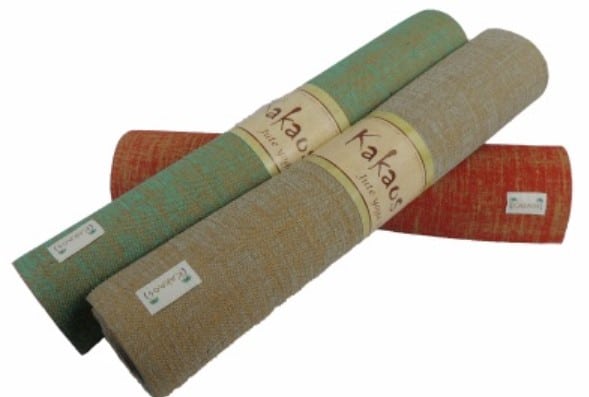
Finding a jute yoga mat that isn’t mixed with PER was difficult. But I found it, and you’re welcome! It’s an affordable option but isn’t organic or sustainably sourced. Nevertheless, it’s still eco-friendly and biodegradable.
Price $37
Wool yoga mat
Best for Hatha Yoga, Yin Yoga, Kundalini, relaxation, and meditation. Wool offers good cushioning and insulation. It has a long lifespan. Some brands offer up to 15 years of warranty. And for those who are sensitive to vibrations, some say that wool has the frequency of The Divine. Wool is a negative ion and apparently protects from EMF waves.
Our pick: Soul Comfort Sheepskin

I found most of the wool yoga mat companies to be based in Europe. This one is based in Canada and ships worldwide. Their mats are made from 100% Australian merino sheep’s wool fabric and backed with 100% cotton canvas to help prevent slipping. They are machine washable. They come in 2 different wool densities and three different sizes. And the best part is that they are locally made on Vancouver Island!
Price: Between CAN$98-$336
Recycled materials
They are a bunch of different materials you could recycle to make a yoga mat. One to avoid at all costs is tires. But to name only one that came up in my research, I want to give a big shout to SUGAMATS.
Our pick: Sugamats

SugaMats took a problem, neoprene wetsuits, and crafted a solution – using them to make yoga mats. Not only are these made of 100% recycled material, but they can also be recycled in turn at the end of their lifecycle. The result? A beautifully crafted neoprene mat for all yoga needs. Another good news is they are made in the US.
Price: Between $64-$109
Travel Yoga mat
Our pick: The Liforme Yoga Mat
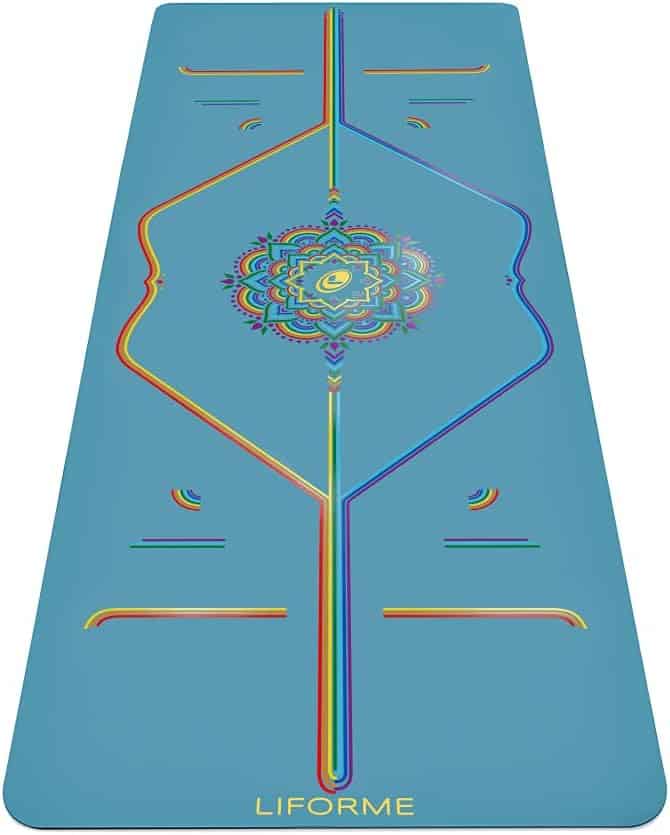
To have a light yoga mat means you’ll have to compromise on the cushioning so that you know. The most eco-friendly travel mat we came across is from the company Liforme. We are happy to promote their mats for multiple reasons.
First, they claim the mats will biodegrade in 1-5 years in normal landfill conditions. They are made using high-quality non-toxic materials such as natural rubber and eco-polyurethane (And yes, I researched that. It looks legit).
They use a heat-bonding process to eliminate toxic glues needing to bind the top and base layers. No plastic packaging. Plus, they give back to a bunch of charities. As of today, they have donated more than half a million dollars and planted nearly 200,000 trees. I say hell yeah!
Price: Between $115-$155
A win-win-win investment
There are so many good companies out there trying hard to have a minor impact on the planet while delivering high-quality products. It often means more money out of your pockets, but you enter a much higher frequency by making eco-friendly choices. You bet on your health and better salaries for the people who crafted your goods and nurture back mother earth. That is a win-win-win!

